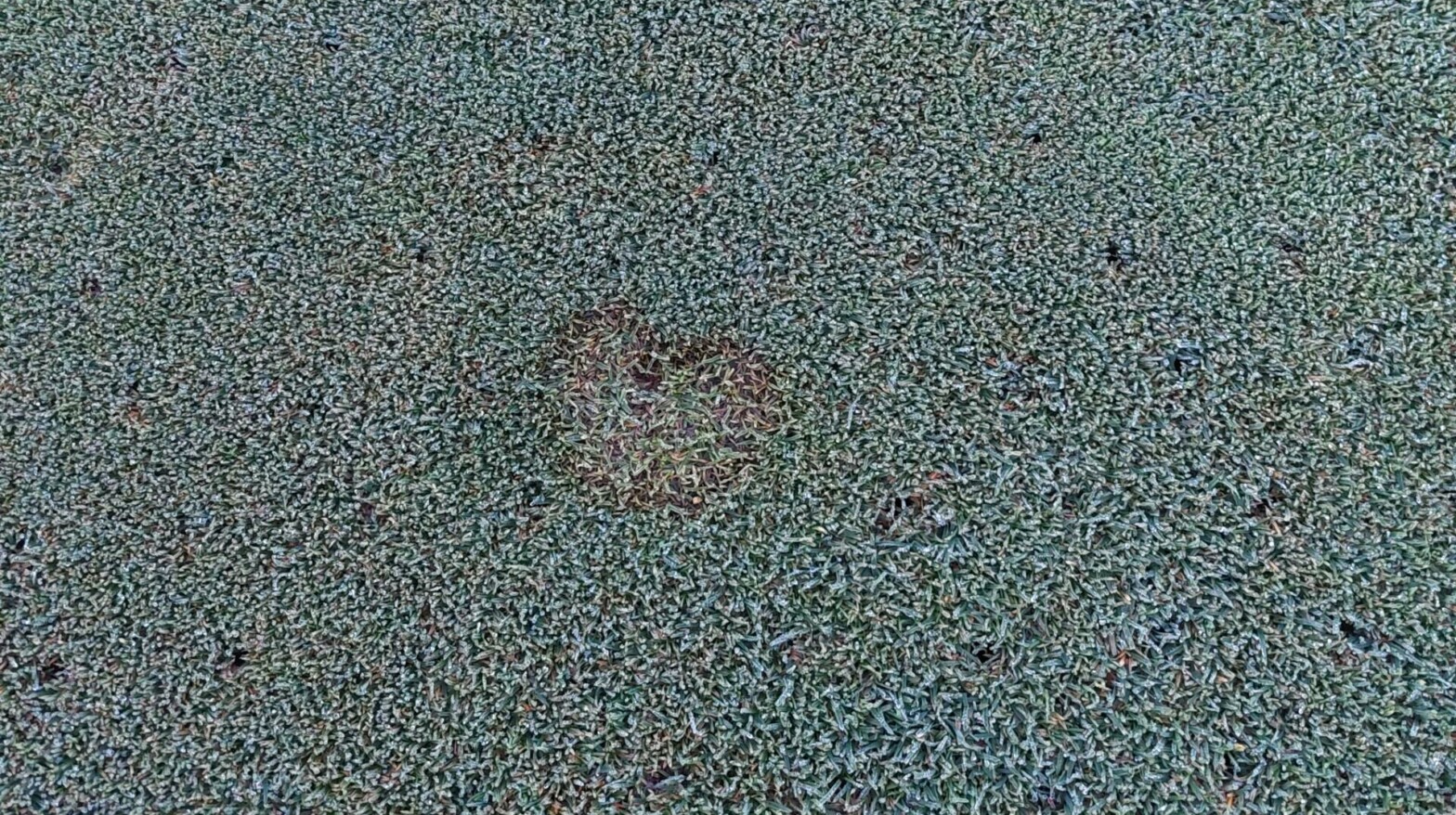For most it was a pretty tough November in terms of disease pressure, Dollar spot in the Southern areas and others getting pressure from Microdochium with all that leaf wetness.
We then got an unexpected cold snap (still there now) which will have been a welcome relief to most. Whilst it does bring additional pressures to the course – issues of frost delays etc, the upside is that fungi (much like grass) is not able to undergo biological processes, and so feed and grow in cold conditions.
Right down to individual atoms, as it gets colder, less happens. At zero kelvin (-273°C) atoms stop vibrating. Luckily we don’t need to get anywhere near that cold for fungi to stop being able to function/grow.

This is the quietest I’ve ever seen the Live Disease Map for Microdochium, it’s usually awash with angry red pins! So we have to thank the cold for that.
Anyone who listens to the ‘On the Horizon‘ podcast will know that Glenn mainly talks about ‘Sub 2°C stopping hours’. The idea that under that 2°C temperature threshold the Microdochium will be effectively paused.
So the more of these ‘stopping hours’ we have the lower the disease pressure should be. Moisture (in terms of leaf wetness (rain or dew)) is less of a driver for disease at these low temperatures.

In terms of Microdochium pressure the graph shows that 2010 was a dream year, averaging 13 hours a day below 2°C! But as we can see that’s something of an anomaly, with us generally seeing much milder Decembers.
It looks like 2022 will be right up there by the end of the month (we only have the first 13 days data so far, and we only got the first ‘Stopping hours’ on the 7th, so its at a severe disadvantage currently!)
What comes next?
Whilst those of us who have dodged the snow and any frost damage are in a good place now.
You may be looking at Microdochium scars with a lovely Christmassy glisten of frosted dew thinking « I’m glad it got cold when it did, that fuz was really getting out of hand« . Just be mindful that they are ‘stopping hours’ as in stopping further spread, not curing the problem.
So have a plan for if the problem doesn’t stay frozen until after the holidays (I hope it does!). It’s not an instant thing that the disease can start up where it left off, soil temperatures have to rise and leaf wetness has to be up but the frost will not have killed the spores and potential for a fierce bounce back if conditions favor it.
Have a plan of action, if your going for a fungicide; preventative is always best but make sure you don’t spray when the ground is frozen.
Also consider:
- Dew suppressants
- Iron at appropriate times
- Appropriate nutrition (only thing worst that too much is too little),
- Leaf wetness management
As always keep one eye on the weather forecast leading up to the break for the holidays, you’ll have less staff availability and so less opportunity to respond if conditions catch you off guard.
Minute 3.20 tells of potential warming for Sunday/Monday so keep tracking that….
Fingers crossed it stays cold to see out this wild weather year, but better to be prepared, you might not be fully staffed again until the 4th January which is a long way off yet!



